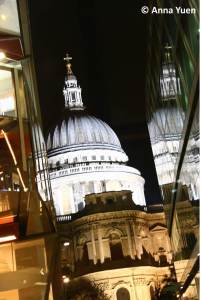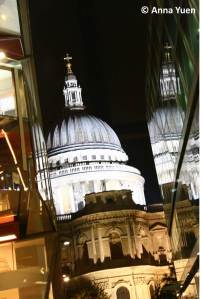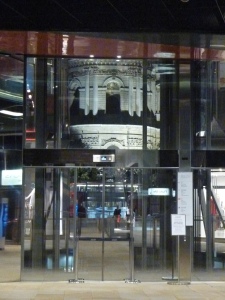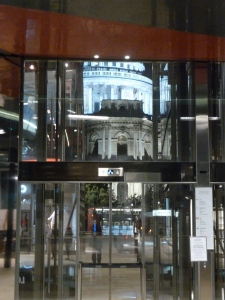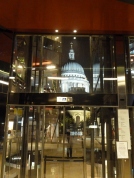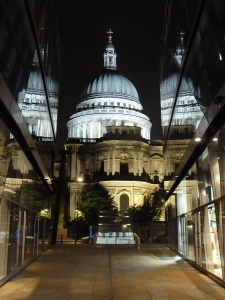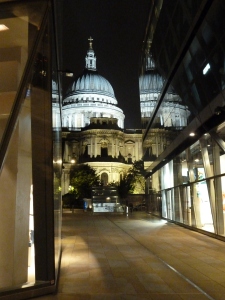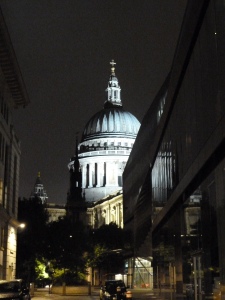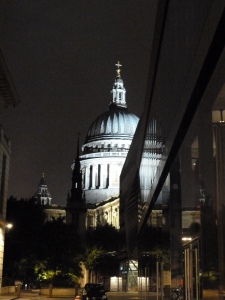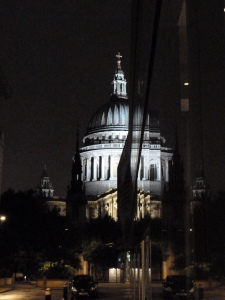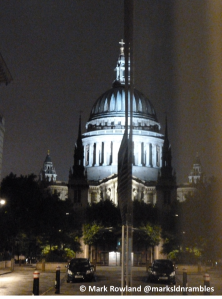It has been said that if you stand anywhere in the City of London and take a 360o turn, you will see architecture from at least three different centuries.
Preserving this heritage, whilst at the same time ensuring the office and infrastructure needs of a world-class financial centre are met, is a delicate balancing act, particularly when space is at the premium it is in the City of London. Throw in the requirement to protect sight lines* to one of the most iconic city landmarks in the world – St Paul’s Cathedral – and you have a mix heady enough to cause the most seasoned of architects and city planners to wake up in the early hours in a cold sweat.
*(Here are the St Paul’s heights and sightlines regulations as set out in the City of London Protected Views supplementary planning document. A cracking read if you’re having trouble sleeping one night, page 9 onwards is the real meaty stuff…)
Which is why they deserve the plaudits when they get it right, which they did with One New Change. In spades.
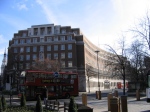 A brief history of the site: As is well known, the area around St Paul’s was razed to the ground during the Blitz. After the war the City planners had initially wanted a square building to face the apse at the eastern end of St Paul’s, but eventually permitted the “classical curve” of the previous 1 New Change Buildings. A 1960’s Portland stone and red-brick building, it had long been criticised for being out of date, being accused of harking back to pre-war styles of “stripped classicism” and “neo Georgian”.
A brief history of the site: As is well known, the area around St Paul’s was razed to the ground during the Blitz. After the war the City planners had initially wanted a square building to face the apse at the eastern end of St Paul’s, but eventually permitted the “classical curve” of the previous 1 New Change Buildings. A 1960’s Portland stone and red-brick building, it had long been criticised for being out of date, being accused of harking back to pre-war styles of “stripped classicism” and “neo Georgian”.
The site was acquired by Land Securities in 1994 with permission to develop it and they launched a design competition for a new office and retail complex on the site. (Hearing of this, Prince Charles contacted Land Securities and “offered to assist” by introducing one of his non-modernist favourites – as he had done with the previous Paternoster Square development – an offer which was politely declined…).
The competition was won by the French architect Jean Nouvel and One New Change opened as a retail and office complex in 2010 to a clutch of awards.
So far, so “yet another glass and steel edifice in the City of London”. But the story really lies in the approach Nouvel took to designing a building literally in the shadow of the architectural icon that is St Paul’s Cathedral and the restrictions that proximity could have placed on him….
I say “could” because Nouvel, rather than taking the complex St Paul’s sight line requirements as a limitation, allowed them to work as a positive force in his approach to the design of the building.
His description of the design concept was that it would be a “stealth bomber” that would fly “under the radar” of St Paul’s (he apparently took an Airfix model of a stealth bomber into his first meeting with the City of London planning committee. Another story circulated that he also placed a box over his own head with eye holes punched in to demonstrate his concept of “relative anonymity”, but the latter may be the stuff of urban legend…).
This photograph (kindly donated by a friend of mine from a trip up the Shard) perfectly demonstrates his idea (St Paul’s is to the left just out of picture).
The building appears a single silica block, carved by the constraints of the St Paul’s heights and sight-line regulations, almost seeming to be bowing down to its illustrious neighbour.
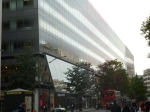 The foundation of four colours in the silica – red, light grey, dark grey and beige – were chosen to “reflect and respect” the Portland stone, concrete and red brick of the neighbouring buildings, but this and the mirror finish of the building have the effect of making it blend in to its background, reflecting its surroundings rather than dominating them.
The foundation of four colours in the silica – red, light grey, dark grey and beige – were chosen to “reflect and respect” the Portland stone, concrete and red brick of the neighbouring buildings, but this and the mirror finish of the building have the effect of making it blend in to its background, reflecting its surroundings rather than dominating them.
But then we get on to the sight lines, and this is where the real genius of this building lies.
First and most obvious is the spectacular (and free!) public viewing terrace that sits atop the building (if you haven’t visited it yet, I 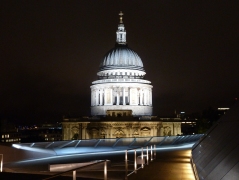 recommend you do so, the views are quite spectacular). This is what Peter Rees, planning officer at the City of London Corporation describes as a “planning win”; the Corporation’s insistence on free, public access space as part of the design (wait for the criticism of “The Walkie Talkie to die down once the “sky garden” – a similar insistence in the approval of that development – has opened…).
recommend you do so, the views are quite spectacular). This is what Peter Rees, planning officer at the City of London Corporation describes as a “planning win”; the Corporation’s insistence on free, public access space as part of the design (wait for the criticism of “The Walkie Talkie to die down once the “sky garden” – a similar insistence in the approval of that development – has opened…).
But Nouvel wasn’t finished yet. Not by a long chalk…
As you walk through the building you see it is structured around four narrow passages intended to reflect a medieval street layout. The central block facing St Paul’s is sliced, as if by a Butcher’s knife, to mark its centre. And this is where Nouvel chose to present us with another range of spectacular new views of St Paul’s.
As you enter from the rear of the building on Bread Street, the lift shaft, despite being largely glass, naturally obscures the view of what is on the other side, offering no more than a tantalising glimpse of a stone arch beyond.
As you approach closer to the lift, you can see something start to reveal itself…
…and then, as you stand right by the lift you can see the magnificent dome of St Paul’s beyond…
…inviting you to walk to the front to see what’s going on. And then, there it is:
The central “butcher’s cut” passage is aligned perfectly to form a frame to show off St Paul’s with the reflective surfaces either side acting like some enormous kaleidoscope reflecting a dazzling array of new views which, for my money, will become some of the most photographed views of St Paul’s.
Nouvel’s final trick was a little more subtle though…
Go back out the rear of the building and turn right down Bread Street to the junction with Watling Street. As you stand on the outside edge of the pavement looking back towards St Paul’s you can see some vague reflection of light in the wall of One New Change
Move a little closer and it starts to take shape…
Stand right on the Bread St/Watling Street corner of the One New Change Wall, until your nose is touching the glass so you can look down the line of the wall, and voila: a perfect mirror image of the dome of St Paul’s (not quite so in this picture but, trust me, go try it, you can get the perfect mirror image with the naked eye).
And here’s the four run together to see the view take shape.
 Happy accident? Stroke of genius? Personally I suspect the latter. I’m no student of physics, but I suspect that wall would have had to be aligned at a pretty precise angle to achieve this effect.
Happy accident? Stroke of genius? Personally I suspect the latter. I’m no student of physics, but I suspect that wall would have had to be aligned at a pretty precise angle to achieve this effect.
That to me is the genius of the One New Change building. Not satisfied with merely retaining existing sight lines, Nouvel has created a building that interacts with St Paul’s in ways that afford us fresh, new perspectives from which to view Wren’s masterpiece and allow us to consider it in a whole new light.
And do you know what? I reckon if Wren could come back for a day that he would love it.

